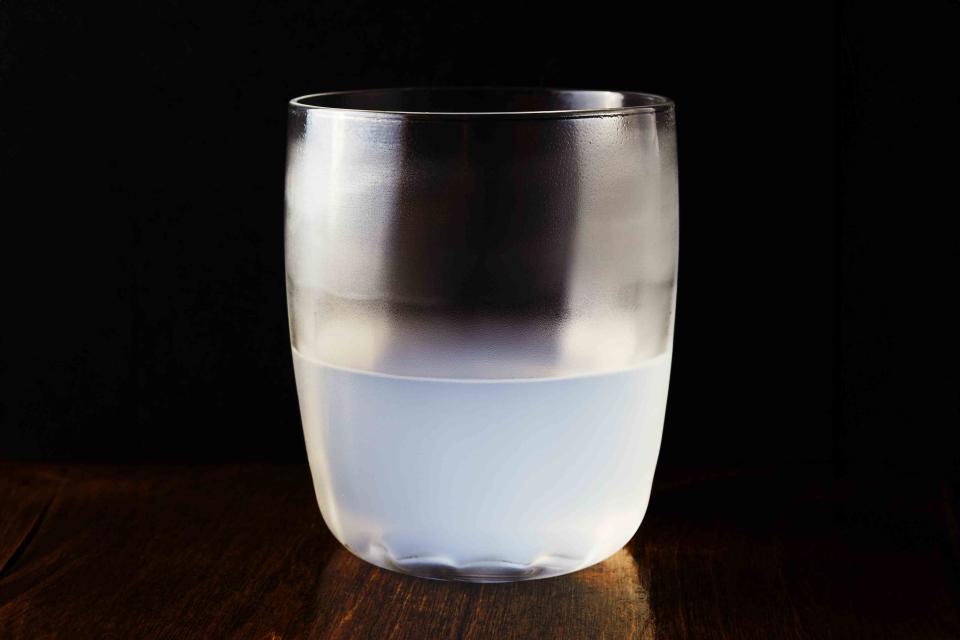Ready or Not, Licorice Is Coming for Your Coffee, Cocktails, and More
Is it time to give licorice-flavored drinks another chance?

Photographer: Sam Hanna
Licorice is a flavor beloved by a few but hated by many — in fact, by most. In 2023, Instacart commissioned The Harris Poll to conduct a 2,000-person survey on the most polarizing foods — licorice came in second only to anchovies as America’s “most hated” food.
And yet lately, that unmistakable anise-meets-fennel flavor has increasingly appeared in drinks at coffee shops, bars, and restaurants.
At Dayglow Coffee in Los Angeles, I recently ordered the French Dispatch made with espresso, roasted chicory, cream, pecan, and anise. To create it, owner Tohm Ifergan took inspiration from his Parisian father. “I grew up watching him eating licorice and putting anise in his coffee, often ricoré [a French instant coffee containing chicory] with cream,” he says. Though the Dispatch was originally launched as a limited edition tribute to Wes Anderson’s 2021 film, Dayglow has brought it back multiple times by popular demand.
Dayglow has also developed several drinks containing the anise-flavored bitter digestif Underberg, including a green apple and matcha mocktail called The Moulin Rouge. “If you’re familiar with the film, you know they hallucinate with absinthe,” Ifergan says, “I wanted to make a drink that emulated that flavor.” Then there’s the Licorice Pizza, a coffee cola the team made in-house. Underberg added a “kind of boozy” note to honor the film’s 1970s backdrop and its adolescent-cusp characters.
Related: Ouzo Snapper with Fennel and Tomatoes
“I’m from Chicago where you pay your [bar] tab, and they hand you an Underberg, but it’s rarely found in cocktails,” he says. “I don’t know why not — it’s a versatile ingredient, and it complements a lot.”
Bartenders agree. While living for a few months in Iceland last year, Mike Wait, a bartender and manager at L&E Oyster Bar in Los Angeles, experimented with two popular local salted licorice liqueurs, Opal and Topas, to create what he calls a Reykjavik Mule.
Made with Icelandic gin, lime, the strongest ginger beer he could find, and finished with an Opal float, it’s a spicy, salty, licorice-y kick in the pants that he served on repeat all winter to visiting friends, myself included. “I went strong — no Fentiman’s or Fever Tree [ginger beer], they’re too wimpy — my theory was that Icelanders really love strong flavors because they’re invigorating in the cold,” Wait says. He still serves a variation at L&E on request, substituting London dry gin for the Icelandic gin and Jagermeister for the Opal, as needed.
At Cure cocktail bar in New Orleans, bartender Gina Hoover makes the Nocturne, a drink the color of cirrus clouds, using the anisette Varnelli L'Anice Secco Speciale. She describes it as a riff off the Sazerac, “slipped into a springtime lens.”
Related: Brace Yourself for the Fancy Jell-O Shot Revolution
“[I created it] around the unfortunate time when people were cheekily inverting the gin and crème de violette in the Aviation,” she says. “Though that was an abomination in my mind, it did get me thinking about how to successfully invert a classic cocktail and play with the balance. I wanted to take the anise and make it the focal point rather than the aromatic.”
Hoover chose to work with a lower-proof, “velvet-like” anisette rather than absinthe to create a flavor profile that appeals to a broader, often licorice-averse audience. “It gives the drinker an opportunity to interact with the flavor in a new environment,” she says.
She hopes the Nocturne will change minds about a wide-ranging category she loves — one that covers absinthe, pastis, arak, and ouzo, to name a few. “Just because a certain application might not have been [your] favorite does not mean that you need to push the entire category aside,” she adds.
If not anisette, a Greek spirit like ouzo and mastika might be the one for you. Order a full ouzo service at Andros Taverna in Chicago for a long night of sipping. Or head for Lola Taverna in Soho to find mastika, an anise-free cousin of ouzo that still tastes of licorice and fennel, prettied-up alongside Hendricks, strawberry-infused Campari, and Lillet Rosé in Lola’s Narcissus Negroni.
Related: The Line Between the Coffee Shop and the Cocktail Bar Has Never Been Blurrier
As for why licorice, fennel, and anise flavors have begun to appear on more menus as of late, Hoover has a theory. “I really think this is a COVID silver lining. When the bars shut down, people got tired of drinking whatever they knew how to make and took the time to invest in furthering their palates,” she says. “Lesser-known spirits have had a chance to seize some limelight. I, for one, am in full support.”
As our palates evolve, our collective tolerance grows — and we’re learning that the difficult tastes we used to find unappealing are, surprisingly, quite pleasing after all.
For more Food & Wine news, make sure to sign up for our newsletter!
Read the original article on Food & Wine.

